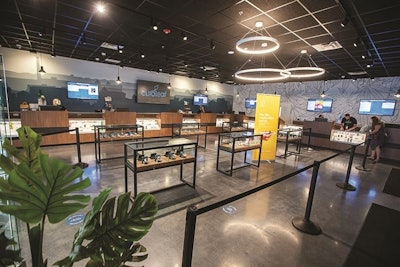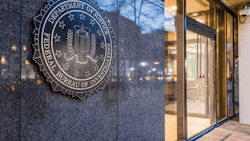

In late July, Curaleaf closed an approximately $700-million deal to acquire Grassroots Cannabis. The move places Curaleaf boots on the ground in 23 U.S. states with a footprint that includes 88 operational dispensaries and 22 cultivation sites with 1.6 million square feet of current cultivation capacity.
The acquisition makes Curaleaf the largest cannabis company in the world, based on its anticipated $1 billion in annual revenue, a stat touted by the company's executive chairman on CNN Business in July.
And, yes, it’s a big deal on face value, but Curaleaf CEO Joe Lusardi says that the transaction represents a pivot toward the longer-term direction of the legal cannabis marketplace.
For instance, the acquisition provides Curaleaf a sturdy, scaled-up position in quickly growing markets like Illinois and Pennsylvania. Not only are those states rolling in cannabis revenue right now (Illinois saw more than $300 million in adult-use cannabis sales through July this year, according to the Illinois Department of Financial and Professional Regulation), but customers in those markets will be a driving force behind shifts in product category demand and connoisseurship.
Lusardi argues that companies will need to be agile and well capitalized to meet that nuanced demand as different states’ customer bases find their footing. Flower sales dominate in the early days of adult-use legalization, he says, but that market mainstay is often supplanted with rising concentrates sales as consumers learn more about cannabis—which in turn prompts more in-depth concentrates R&D back in the lab.
“Everybody's talking about how Illinois is a great market, but if you don't actually have the capacity to capitalize on it, then it really doesn't matter,” Lusardi says. “And I think what's important about Grassroots is that it was a developed business. It wasn't just a collection of licenses. It was assets that these guys have been working on for half a decade.”
Lusardi and the Curaleaf team homed in on Grassroots because they saw a cultural match that could deliver long-term on the companies’ visions for the industry.
A good understanding of your own company’s values is key to productive M&A.
“The culture of a business is a big factor in how successful you’re going to be with integration and how well the transaction ultimately works out,” Lusardi says. “We really loved the Grassroots team, and they were built really much like Curaleaf—as a vertical business, very entrepreneurial.”
That’s important—not only for the short-term health of the business and its employees, but for the long-term strategy that all M&A deals involve. Curaleaf, intent on developing “the first national cannabis brands” (Curaleaf itself and Select, an earlier acquisition), is building out a coast-to-coast presence to do just that.
“Many of the MSOs have … retrenched into markets where they were performing well or where they have capital to build out, whereas Curaleaf has really continued to keep our foot on the accelerator and expand into more markets—given where we have a strong balance sheet and we can actually take on those projects,” Lusardi says. “And I think that's going to pay for itself—maybe not this quarter, but in the next couple of quarters, you're really going to see that separation as a result of all the work we're doing to put assets online and then invest into developing markets.”























